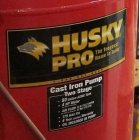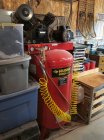Hi Michael: You are just down hill from me, so greetings and salutations. The shop planning and building is one of life’s great experiences; after our weddings, children and more weddings. You are getting all the usual outstanding advice. However, I noticed no one responded to “cement floors.”
Free advice is worth what you pay for it: put down tuba4 stringers and cover with 3/4 ply. Tongue and Groove sub-floor works great. Put the good side up, slather it with BLO for color and then a couple of coats of poly. Turning tools dropped won’t get dinged; your feet and legs will thank you and it will look like a “wood shop’!
Since you’re at sea level I would also recommend using the 6mm plastic drop cloths from the Big Box stores under the tuba4s.
Separate circuits for the 220 machines; plenty of outlets for the 120 hand tools. Power strips are your friend; you won’t use more than one at a time.
Glad you are deploying A/C there on SS. Does get a tad humid.
Blessings, Tom, uphill in GA, with a wooden floor shop.


